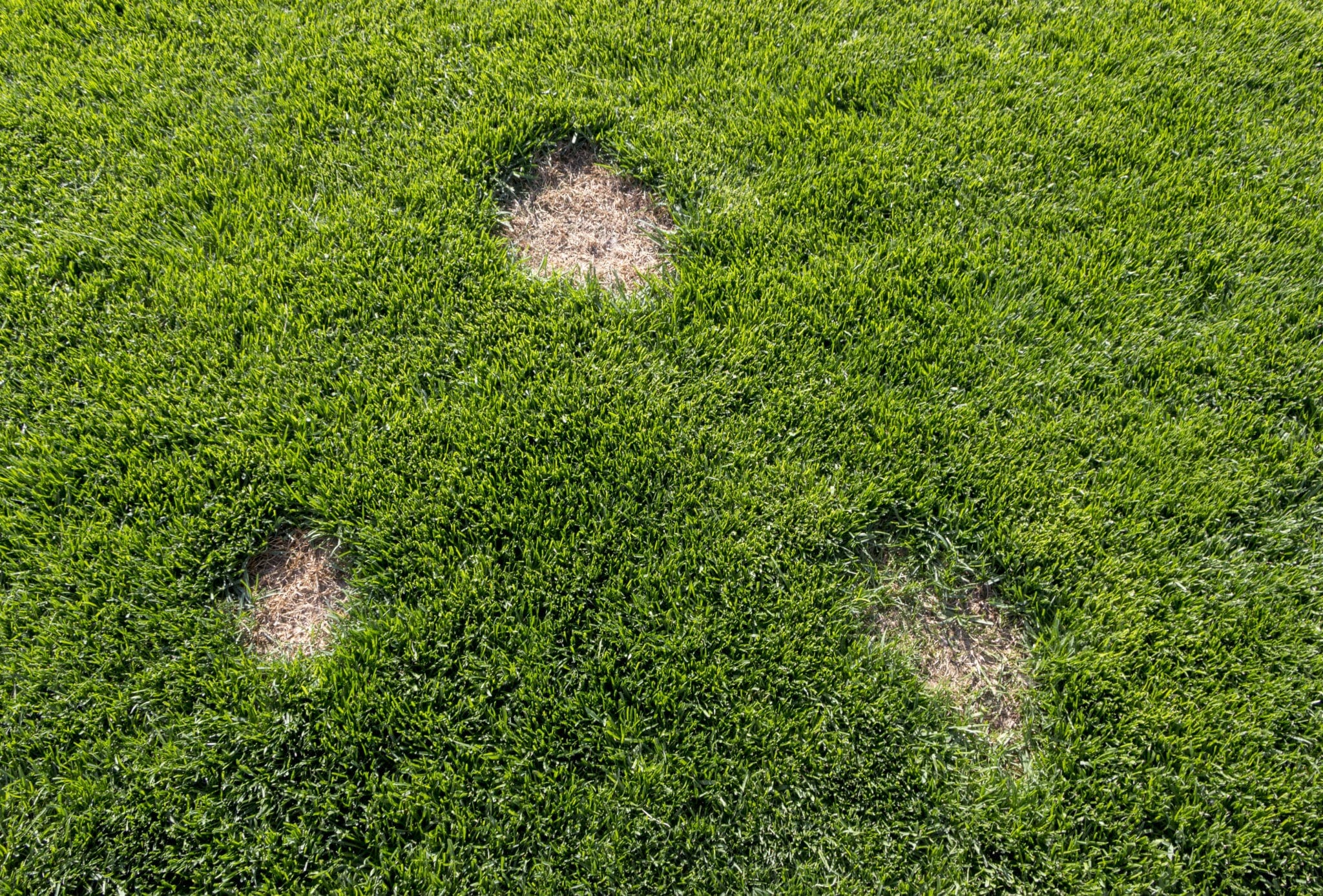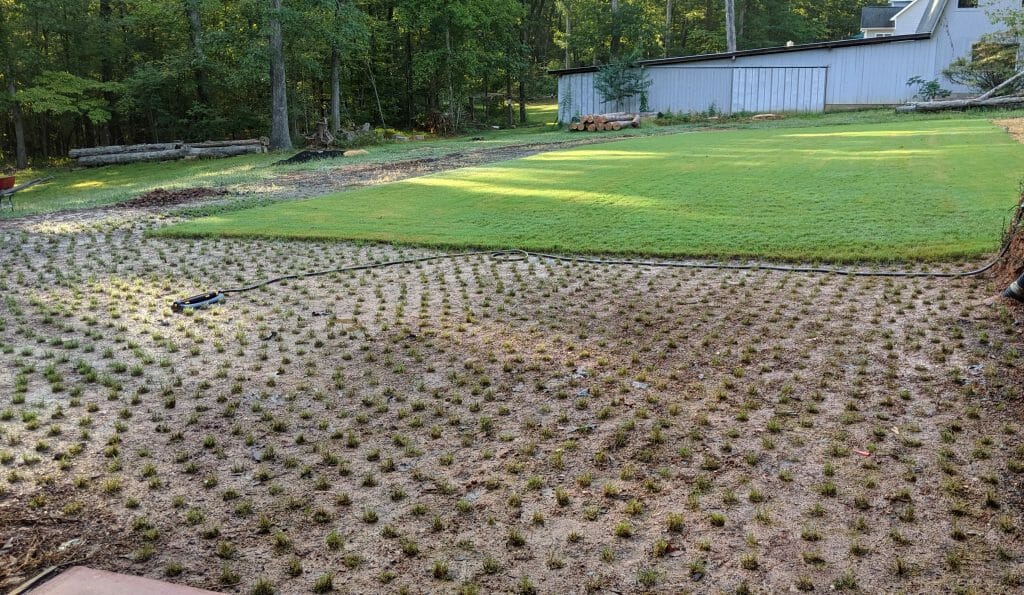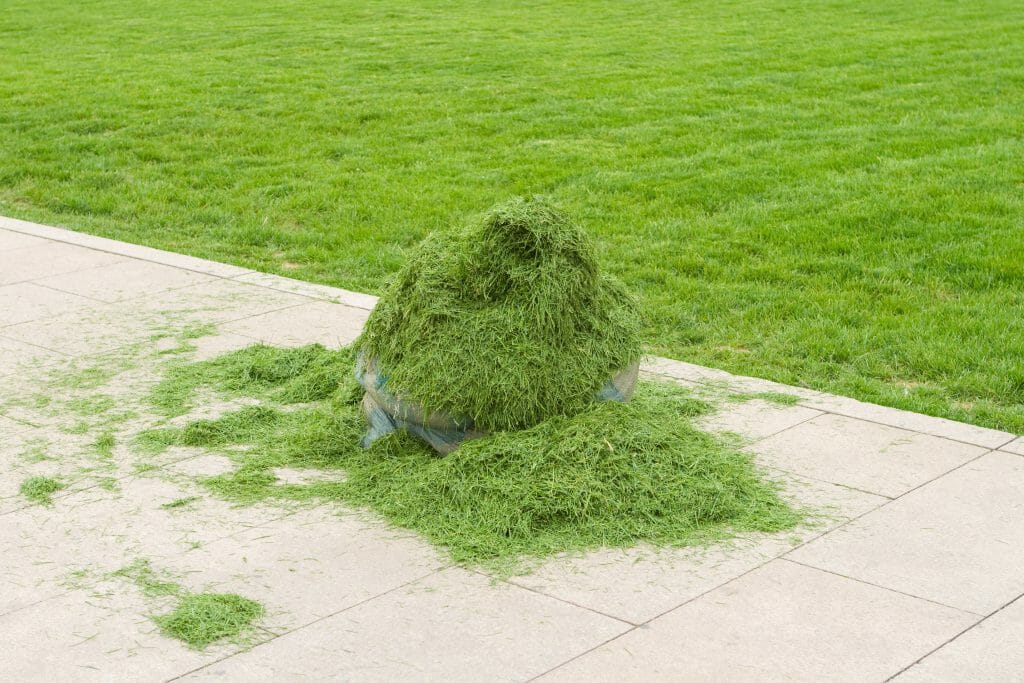Dogs have to go somewhere and a lawn is a natural choice, but dog pee killing grass is a difficult one to avoid. If you have a lawn and a four-legged companion, it is likely they will have peed on the grass more than once. Is dog pee bad for grass? Yes, in the amount they produce!
Why does dog pee kill grass? Well, dog pee contains a lot of nitrogen, too much to be healthy for grass. The easy fix for this is spraying water on the area where your dog relieved themselves to dilute the nitrogen levels.
Although the high nitrogen levels in dog urine can be damaging to grass, there are several ways to take care of it. There are simple fixes to prevent a dog from peeing on your lawn and to prevent damage when they do.
These are the best tips for dealing with dog pee killing your grass.
Why Does Dog Pee Kill Grass?
Dog pee contains very high levels of nitrogen, just like fertilizer. Unlike fertilizer, the levels of nitrogen you spread over your lawn is not controlled in canine urine.
If you have worked with fertilizer before, you may know that too much fertilizer is not good for your lawn. Instead of making the grass stronger, it actually causes damage.
That is why dog pee could potentially kill grass; there is too high a concentration of nitrogen in one specific area. That is why you usually see the damage as discolored spots or even brown spots of dead grass on your lawn.
Usually, a dog peeing on the lawn is not a problem – you won’t notice the damage. It only becomes noticeable when your dog repeatedly pees in the same spot.
When Dog Urine Actually Helps Your Lawn
In some cases, having your dog urinate on the lawn is not so bad. When the soil is lacking nitrogen, the spots where your dog pees actually become a brighter green.
What this indicates is that your lawn could do with some extra fertilizer to make the soil healthier. Healthier soil means healthier grass.
How to Neutralize Dog Urine on Grass
Don’t panic when you dog pees on your lawn. It is not a difficult problem to solve.
The easiest way to prevent damage after a dog pees on your lawn is to spray the area with water. The water dilutes the nitrogen levels so that the soil may actually benefit from it, instead of getting burned.
Fixing dog urine spots becomes more difficult when the area has already burned and turned brown. This is when you will have to replace the grass.
How to Replace Dead Grass Spots
- Make the damaged area very wet to dilute the nitrogen in the soil.
- Remove the dead grass.
- Sow new grass seeds or place a plug.
- Keep your dog and yourself away from the spot during the germination process.
- Wait to use that area again until the lawn has been mowed 3 – 4 times.
Here’s a great video from Ryan Knorr, showing you how to fix those dog urine spots.
How to Prevent Dog Urine Spots on Lawns
If you don’t want to deal with damage control, you will have to find ways to prevent your dog from peeing on the lawn, because dog urine killing grass is really frustrating. Or at the very least, have your dog pee at different spots each time.
There are several ways to prevent dog urine spots. Here are a few examples.
- Have Your Dog Drink More
Most dogs know how to keep themselves hydrated but some could do with a little more water in their system. Dogs that drink more water have lower levels of nitrogen in their urine which means less damage to your lawn.
Don’t force your dog to drink more than necessary. Like in humans, drinking too much water can become toxic.
- Create a Safe Spot for Peeing in the Yard
Save an area in your yard for mulch and wood chips, specifically for your pet to pee on. Pee on mulch and wood chips won’t leave a bad smell and your dog can still relieve themselves in the yard.
This tactic may require some training. It is best to train your dog with positive incentives so that he or she will actually enjoy peeing on their designated yard toilet.
Frequently Asked Questions:
Will Baking Soda Neutralize Dog Urine on Grass?
Using a baking soda solution to neutralize dog pee on grass is a myth. Since baking soda is a salt, using it as a lawn treatment can actually cause more damage.
Spreading baking soda or a baking soda solution over your lawn won’t get rid of dog pee odor. Plus, trying it out will go at the expense of your nice lawn.
Does Lime Neutralize Dog Urine in Grass?
Spraying a lime solution over grass won’t neutralize dog urine. The lime does not react in a way that will help dilute the nitrogen levels in dog pee.
The concept behind putting lime on grass is that it will help balance out the pH levels in the soil. However, this approach is not effective and is not healthy for your grass.
What Type of Grass Is Most Resistant to Dog Urine?
Perennial ryegrass and fescue are the most resistant to dog pee. Other grass types that have a high salt tolerance like zoysia and distichlis may be more resistant to dog urine, as well.
How to keep dogs from peeing on your lawn?
There are a number of things you can do to keep dogs from urinating on your lawn. One is to train your dog not to urinate in that area. This can be done by using a variety of methods, such as positive reinforcement, negative reinforcement, or a combination of both. Another method is to use a physical barrier, such as a fence, to block off the area where you do not want your dog to urinate.
Summary
Having your dog pee on your lawn does not automatically result in a ruined lawn. However, there may be some damage if your dog chooses to consistently pee in the same spot or if the urine contains particularly high levels of nitrogen.
Fixing dog urine spots is best done by making the area thoroughly wet which dilutes the nitrogen levels. This way, the soil can actually benefit from the extra nutrients instead of suffering damage.
Other preventative options include a designated pee spot and having your pooch drink more water.





